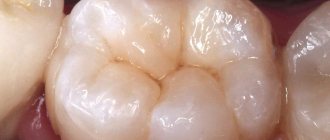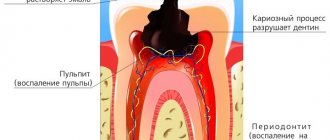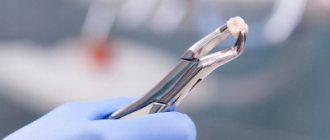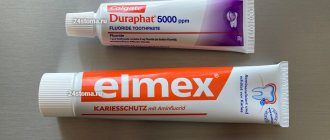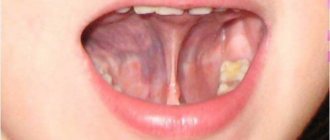Many people ask a completely logical question when they find blue veins under the tongue: what can this mean and does it indicate the development of any disease? We hasten to reassure you that in most cases this phenomenon is considered absolutely normal, due to the peculiarities of blood circulation, vessels located close to the surface and a number of other factors caused by physiological processes.
However, some diseases and borderline conditions can provoke the appearance of blue veins under the tongue, so it is important to learn to distinguish normality from pathology.
We will tell you how to do this further.
Anatomical structure of the tongue
To better understand the reasons for the appearance of blue veins, one should turn to the anatomical features of the structure and functioning of the human tongue.
It is a muscular organ covered with a mucous membrane. The tongue has many nerve endings, thanks to which the necessary signals are sent to the central nervous system.
The tongue consists of two main parts - the body, which can be easily seen with the help of a mirror, and the root, located near the pharynx. They are separated from each other by a V-shaped terminal groove. The surface of the body is rough due to the presence of multiple papillae on it, which are responsible for taste, temperature and pain perception.
In the middle of the lower part of the organ, the mucous membrane forms a frenulum , which connects it to the mucous membrane of the oral cavity. On the sides there are fringed folds, converging to the tip. It is between them and the frenulum that the elements of the circulatory system are visible.
The lingual artery is responsible for the blood supply to the lingual tissues; with its help, oxygen-enriched blood is supplied to the organ. This is how the tongue is nourished. Venous outflow is provided by a complex of lingual vessels connecting to the internal jugular vein. It is the change in their color that most often causes concern among people.
Diagnostics
Examination by an otolaryngologist
If characteristic growths are detected in the oral cavity, you should contact one of the recommended specialists (depending on the location of the focal zone):
- dentist;
- otolaryngologist;
- dermatovenerologist.
It would also be a good idea to visit an oncologist to rule out the possibility of developing a tumor of malignant origin.
Diagnosis of condylomatosis and other diseases associated with the formation of growths under the tongue consists of the following steps:
- visual examination by a doctor;
- taking anamnesis;
- laboratory research;
- histology.
Why do blue veins appear under the tongue?
Since ancient times, changes in structure, color, and the formation of plaque on the surface of the tongue have been considered evidence of disturbances in the functioning of internal organs . That is, it acted as a kind of identifier of a person’s health status.
Bluish vessels, as already noted, are not always a pathological sign, but in some cases they, like a litmus test, make it possible to promptly suspect any disorders in individual organs and systems.
If the appearance of the sublingual vascular pattern changes, you should consult a doctor who will give an expert assessment of what is happening.
It’s worth noting right away that the presence of any disease is not limited to just increased coloration of the tongue; it should be considered, rather, as an additional sign. Let's consider a number of reasons that provoke such a clinical manifestation.
Nutrient deficiency
A lack of B vitamins can affect the appearance of not only blood vessels, but the entire oral cavity. In particular, when there is insufficient intake of vitamin B2, known as riboflavin, similar symptoms appear in the body.
In addition, a person becomes susceptible to a number of diseases of the oral cavity and throat, such as stomatitis, pharyngitis, tonsillitis , he regularly develops cracks on his lips that do not heal for a long time, the color of the tongue surface also changes, darkens and acquires a purple tint.
This condition is corrected by additional intake of vitamins in tablet form and selection of an appropriate diet.
Respiratory diseases
Insufficient saturation of the circulatory system with oxygen due to various pathologies of the respiratory system leads to increased coloration of the lingual vessels , even black. For any of the diseases of the lungs and bronchi, the main symptoms are characterized by lack of air, coughing with or without sputum, and the presence of wheezing, which can be heard when listening to the chest with a phonendoscope.
High cholesterol
Disturbed lipid metabolism and the appearance of fatty plaques significantly disrupt the natural blood flow and nutrition of organs. For this reason, the sublingual space may have an excessively dark color.
Circulatory disorders
In most cases, it is problems with the circulatory system that provoke visual darkening of the vascular pattern. In particular, varicose veins in the sublingual area can appear as a result of:
- increased intravascular pressure as a result of heart failure due to atrial fibrillation and flutter and valve defects;
- hereditary predisposition, characterized by some thinning of individual walls, as a result of which nodes and bloating appear;
- hemorrhoids - a pathological condition accompanied by a violation of the outflow of blood with the formation of nodes localized in the rectal area. You can learn more about varicose veins of the rectum from our article;
- decrease in the elasticity of vascular walls due to age-related changes.
Painful sensations
Swollen blue veins that appear under the tongue indicate the development of varicose veins. Due to anatomical features, the vessels themselves cannot hurt due to the absence of nerves in them.
Due to the course of varicose veins , they expand and put pressure on the nerve endings located in the immediate vicinity, causing pain in the sublingual area. It is these sensations that non-medically savvy people confuse with pain in the vessel.
In addition, late stages of the development of the disease provoke violations of the integrity of the integument due to the formation of ulcers, which will definitely cause discomfort.
promptly seeking qualified help , you can get complications from varicose veins in the form of thrombophlebitis. Blockage of the lumen of the sublingual vessel by a thrombus will inevitably make itself felt not only by visual changes, but also by physical pain.
If, during dental surgery, when a tooth was pulled out, blue veins with characteristic swelling were noticed under the tongue, you should consult the doctor who performed the extraction. He will be able to examine the picture in detail, draw appropriate conclusions and, if necessary, refer you to a specialized specialist.
Read more about massage for varicose veins in our material.
Sublingual veins hurt
Often, when visiting a doctor, a person complains that the veins under the tongue hurt. But there are no nerve endings in the vessels and therefore they cannot physically hurt, so such complaints are fundamentally wrong.
Painful sensations can come from nerves located in close proximity to the veins due to their pinching.
Pain can also occur in the skin covering the vessels, which may be swollen, have minor injuries or ulcers. With varicose veins of the sublingual veins, pain occurs due to pressure on the nerve endings from the walls of swollen vessels or the development of varicose ulcers. The cause of pain can be thrombophlebitis - an inflammatory process in the walls of the veins themselves and its partial blockage with a blood clot.
Thrombophlebitis on the tongue is a dangerous condition
How to diagnose
If you suspect the development of varicose veins, the only correct decision would be to consult a specialized doctor - a phlebologist. He will conduct a visual examination and collect anamnesis, after which he will prescribe additional studies to obtain comprehensive information on a particular case.
Ultrasound examination of the affected areas is an accessible and informative method of diagnosis for varicose veins. With its help, qualitative indicators of blood outflow are checked , allowing one to determine the presence or absence of blood clots that pose a real threat to health. Sometimes radiography is prescribed using a special contrast agent.
Despite the fact that women are more susceptible to developing varicose veins, its manifestations in the sublingual area occur equally often in both sexes.
We wrote in detail about the methods of diagnosis and treatment of varicocele on the left testicle in our article.
Possible consequences and complications
Blue veins located under the tongue are manifestations of diseases.
If left untreated, the following consequences are possible:
- glossalgia does not threaten human health, but reduces the quality of life. You can often notice a coating on the tongue or swelling, which leads to a change in the perception of taste;
- hematomas and mechanical damage to the tongue also reduces the quality of life. There is pain when eating and talking. Chemical burns are dangerous due to bacterial contamination with subsequent spread of infection;
- If iron deficiency anemia is left untreated, the disease can progress to more advanced stages. A reduced hemoglobin content in the blood leads to hypotension, dizziness and a deterioration in quality of life.
Despite the fact that iron deficiency anemia is a fairly common disease (about 30% of people), only in some representatives it is manifested by blue discoloration of the mucous membranes.
Blue veins of the sublingual region are a kind of identifier of pathologies of internal organs. The manifestation itself is not dangerous, since in some cases they are the norm for a certain category of people. If this symptom appears in combination with other manifestations, it is necessary to consult a specialist to determine the cause.
How to treat
Modern methods of treating varicose veins can be divided into medicinal and surgical. The former are used to slow down and stop the course of the disease in the initial stages, from initial manifestations to stage 2 disease.
Surgery is a panacea for advanced disease. However, it is the latter that has the most pronounced result and allows you to get rid of not only the cosmetic problem, but also the possible development of complications caused by this pathology.
The choice of the necessary treatment method is the prerogative of the attending physician alone, who can correctly assess the patient’s condition.
Conservative therapy involves taking medications with various pharmacological effects, namely venotonics, anticoagulants, antiplatelet drugs . Some of them come in various forms and are used both internally and topically.
Blue swollen veins that appear under the tongue, photos of which can often be seen on the Internet, can be treated surgically or by injecting a sclerosing substance into the venous cavity, causing it to stick together.
Veins are removed by microphlebectomy or laser coagulation. Any of these techniques is aimed at restoring proper blood circulation. We described in our material how varicocele manifests itself and is treated in adolescents.
How dangerous?
It is impossible to give a definite answer to this question due to various reasons for the manifestation of such symptoms.
If the structure of the vessel is not disturbed, but it is blue or black in color, this may be a normal variant. Venous blood is darker in color than arterial blood due to its saturation with carbon dioxide. Additional blueness is given by the vascular wall, mucous membrane and other tissues that can distort the real shade of blood.
Another situation that also does not require treatment and is considered completely natural is the aging of the body. , a natural thinning of the vascular walls occurs , resulting in dark blue veins appearing under the tongue.
A change in not only the color, but also the structure of the sublingual venous lines, the formation of nodules, multiple or single, the appearance of painful sensations - all this is a reason to contact a specialist to carry out a differential diagnosis and establish the root cause of the manifestation of such symptoms. Read more about varicocele in a 14-year-old teenager in our material.
Do I need to follow a diet?
If any of the reasons listed above have been medically established as causing the appearance of a cosmetic defect, it would not be a bad idea to reconsider your own gastronomic preferences.
Each of these conditions requires at least a slight adjustment of the diet , especially if a person prefers to eat “junk” food. The adjustment is as follows:
- in increasing the volume of consumption of products of plant origin - vegetables, fruits, herbs in fresh, baked form, as well as in salads;
- excluding excessively fatty meat, spicy, salty and fried foods from the menu. When cooking food, you should choose baking, boiling or steaming;
- in regular consumption of sea fish and seafood, as the main source of saturated acids;
- in choosing pasta made from durum wheat or vegetables as a side dish for meat or fish dishes, depending on individual preferences;
- You can’t give up cereals; they are a source of vitamins and microelements. The most useful are buckwheat, oatmeal, and pearl barley;
- You should use olive or any other vegetable oil as a salad dressing. As an exception, it is allowed to consume homemade mayonnaise once a week for this purpose in limited quantities - no more than 30 ml.
External manifestations (+photo)
Growths under the tongue in humans form in the form of warts, papillomas, and condylomas. All varieties are signs of the presence of VPI in the body. Their differences lie in the type of epithelium and external manifestation. Papillomas can be either protruding above the surface of the mucous membrane or flat with rough tissue. And condylomas always rise above the surface of the skin or mucous membrane with the help of a fairly high stalk.
Types of growths under the tongue:
Depending on the type and causes of formation, condylomas come in different colors:
- red;
- white;
- light with a yellow tint;
- pink;
- gray;
- from light to dark brown.
Growths in the oral cavity are most often localized in the following areas:
- on the mucous membrane under the tongue;
- on the bridle;
- on the gum under the tongue;
- on the inside of the tongue;
- along the rim of the tongue and other areas of the mucous membrane.
Treatment methods at home
The basis of home therapy is following the doctor’s recommendations and maintaining a healthy lifestyle. Quitting smoking, drinking alcoholic beverages, and observing basic dietary restrictions are the main requirements in the therapy process.
If varicose veins are diagnosed in the sublingual area in the initial stages, it is advisable to use various decoctions and infusions of herbal components that have anti-inflammatory and restorative effects as additional measures. Let's look at the best recipes:
- Mix a glass of water at room temperature with a tablespoon of natural apple cider vinegar. Divide the contents into 2 doses and consume immediately after meals;
- Divide the sour apple into 6 slices, fill them with 500 ml of boiling water, leave for 4 hours. Then mash the fruits, add 3 teaspoons of honey and take the resulting liquid three times a day, 150 ml before meals;
- nutmeg-alcohol tincture has also proven itself as an effective remedy in the fight against diseases of the circulatory system. Mix 250 grams of crushed nuts with a bottle of vodka and leave for 20 days in a cool place, protected from direct sunlight. Take 20 drops half an hour before meals.
Under no circumstances should you rely on traditional medicine alone and refuse drug therapy prescribed by your doctor. This can aggravate the course of the disease and provoke complications.
Treatment methods
Blue veins under the tongue, in most cases, are a consequence of some disease. Eliminating the problem is quite simple - for this it is necessary to carry out comprehensive treatment of the disease.
The following remedies are used for treatment:
| Disease | Drug treatment | Traditional methods | General recommendations | Physiotherapeutic methods |
| Iron deficiency anemia (vitaminosis) | Iron supplements are prescribed by a doctor based on contraindications and causes of the disease. The most commonly used drugs are under the trade names “Sorbifer Durules” (2 tablets per day. If necessary, you can increase the dose to 4 tablets), “Totema” (2-4 amps per day), “Ferretab” (1 caps. on an empty stomach. If necessary, increase the dose to 2-3 caps.). Ascorbic or folic acid enhances the absorption of iron into the blood, which increases the effectiveness of the drugs. They also affect the circulatory and immune systems. The first signs of successful treatment can be noticed after 1-2 months of therapy. It is recommended to use the drugs for 1.5-2 months. | Garlic tincture is a fairly common remedy. To do this you will need 10 g of golden mustache leaves, 200 g of peeled garlic, 500 ml of alcohol (70%). Leave the mixture for 3 weeks, then strain. Take with 150 ml of milk (20 drops of tincture) 3 times a day. You can also use linden tea. To do this, mix the drink with honey and add 30 ml of red grape wine. | During therapy, it is recommended to follow a certain “diet”. It is not recommended to consume coffee and products containing caffeine 2 hours before or after taking iron supplements. You should also limit your consumption of cereals, beans, nuts, dairy products and eggs. Iron absorption may include foods or dietary supplements that contain calcium, magnesium, zinc, selenium, iodine and chromium. | Severe forms of anemia require treatment and observation in a hospital setting. Most often, a transfusion of red blood cells is required. |
| Mechanical or chemical impact | Rinsing with Miramistin allows you to disinfect wounds. Algorithm for performing the procedure: 1. Prepare to rinse 30 minutes after eating. 2. Rinse your mouth with clean water. 3. Dilute the drug according to the recommendations. 4. Rinse the cavity for 5-7 minutes. It is not recommended to consume food or water for the next 30 minutes. "Asepta" is a mouth rinse. It is recommended to use according to the instructions 2-3 times a day. within 5-7 days. | Calendula tincture can be used as a rinse. To do this, you need to dilute 5 ml of the product with 200 ml of water. It is recommended to rinse the mouth with the resulting solution 2-3 times a day. Propolis tincture is an antimicrobial agent. It is recommended to treat skin lesions with undiluted product 2-3 times a day. using a dampened cotton swab. The course of treatment is 2 weeks. | In case of mechanical damage, the wounds heal after 7-10 days. It is not necessary to treat them. Healing chemical damage requires careful treatment. When choosing means for disinfecting and healing such wounds, you must consult a specialist. | |
| Phlebeurysm | The disease does not require therapy if it occurs in elderly and senile people. In this case, such a change in the body is characteristic of natural aging. If varicose veins in the sublingual area are caused by other diseases or disorders in the body, it is necessary to stop or eliminate the cause. | |||
| Glossalgia | Sedatives regulate excitation processes in the central nervous system. Among sedatives, the most commonly recommended are those containing bromine. These drugs are dispensed strictly according to a doctor's prescription. As an easy remedy, you can use combination drugs - Novo-Passit, Valemidin. B vitamins are actively used for pain as an additional remedy. This group also includes folic acid, which affects the circulatory system. Tranquilizers also affect human nerve endings. The drugs are quite dangerous, so their use and dispensing is possible only under the supervision of a specialist. The most accessible drug of this pharmacological group is Afobazole. | Many specialists in the treatment of this disease recommend adhering to a certain diet. Recommendations include avoiding fried and salty foods and a large amount of spices. It is also recommended to eat soft foods that do not damage the oral mucosa. | Reflexology is a treatment method that comes from Eastern medicine. It is often called “acupuncture” because it works by applying needles to specific points on a person. The method is often used in the treatment of diseases of the nervous and cardiovascular systems. | |
| Hematoma | Vitamins A, C, K, E, B. Complex exposure to vitamins is not a mandatory treatment. B vitamins affect the circulatory system, also maintaining the walls of blood vessels in tone. Ascorbic acid improves immunity and regulates the absorption of iron into the blood. Vitamin treatment can also be used to prevent the appearance of hematomas in the sublingual area. In this case, it is necessary to regulate the amount of vitamin in accordance with the diet and individual norm. | Chamomile is a mild antiseptic and analgesic. To relieve pain in the sublingual area, you can use chamomile infusion. To do this you will need 1 filter bag and 200 ml of hot water. The package must be infused for 15 minutes, and then the infusion must be cooled. An ice cube can also relieve tension in the tongue area. However, you should not use this method often to prevent frostbite. | ||
The most correct treatment, indicating individual dosages, is determined by the doctor. A phlebologist treats blood vessels.
Preventive actions
The following tips will help reduce the chances of pathological changes in the sublingual area:
- nutrition should be regular and balanced;
- oral hygiene measures should be carried out 2 times a day, morning and evening;
- Regular medical examinations by highly specialized doctors will allow you to identify the slightest changes at the initial stages, when they are still being successfully treated. Such events should be held at least once a year;
- if there is a hereditary predisposition to varicose veins, constant moderate physical activity should be maintained;
- Sanitation of the oral cavity at the dentist will avoid the proliferation of pathogenic microflora in it, which becomes the impetus for the formation of pathology.
As you know, it is much easier to prevent the development of a disease than to cure it later, so you should not neglect these simple rules.

